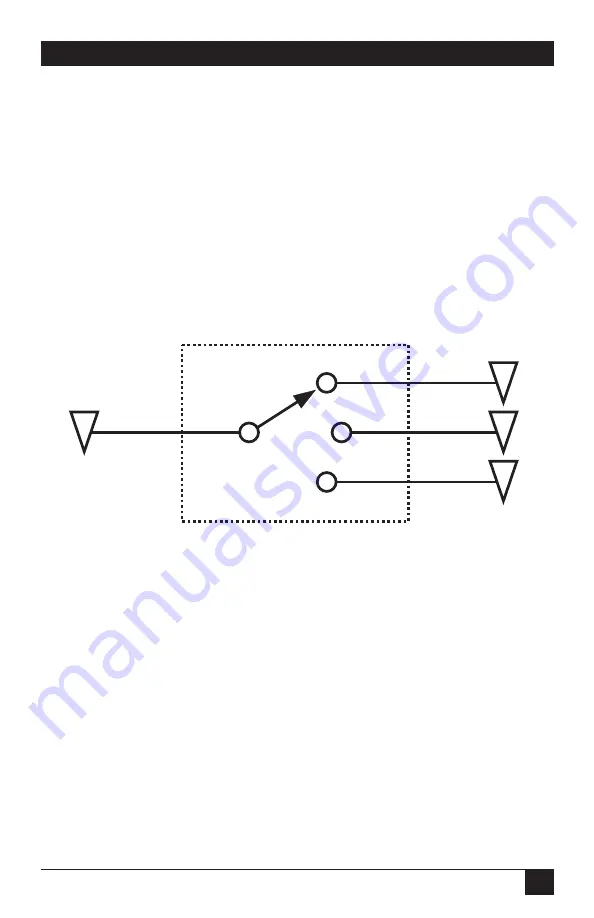
17
CHAPTER 6: Technical Details
When you check, install, or reposition terminators, please make sure that
they are pointed in the right direction, with Pin 1 properly aligned. Also, in
order for termination to work properly, there should be a termination-power-
source (“TERMPWR”) present. Some SCSI devices have a tiny fuse for the
termination-power line, which may be located very close to the termination
sockets: If you can see this fuse, TERMPWR should be present. If you can’t see
the fuse, however, this doesn’t necessarily mean that TERMPWR is absent.
Consult the manual for the SCSI device in question.
6.3 Termination Exceptions
This is the normal termination arrangement with the SCSI Switch II (the
wedge shapes represent terminators):
Figure 6-1. Normal Termaination.
An exception to the illustration above is the case where a branch bus may
have local data traffic even while it’s disconnected from the main bus—if the
branch has, for example, both a computer and a disk drive, and the computer
can operate the drive even when the main SCSI bus isn’t switched to that
branch.
Normally, termination should be placed at the two very ends of a SCSI bus.
For a SCSI Switch II system, this means one terminator at the end of the main
bus and one at the end of each branch bus. But if an unselected branch bus
can operate on its own, then it must have termination at both of its ends. So
imagine that we dutifully add a terminator to the near end of such a segment
Main
Bus
Branch
Buses


































